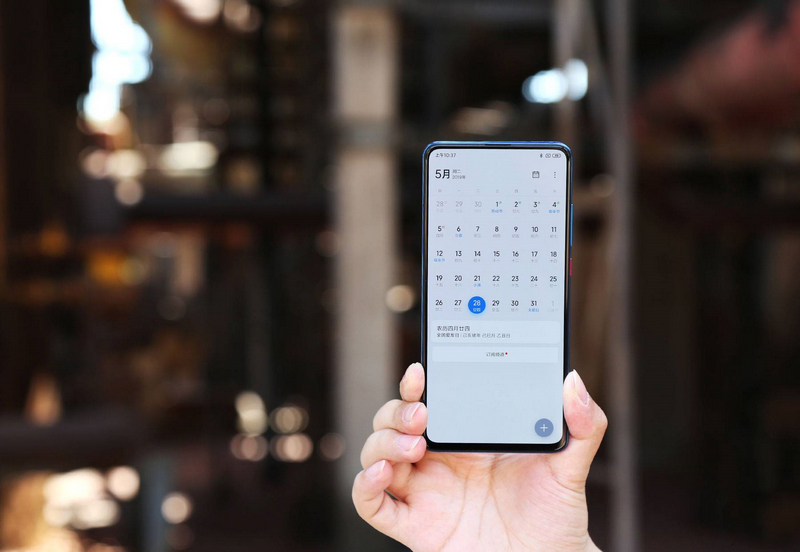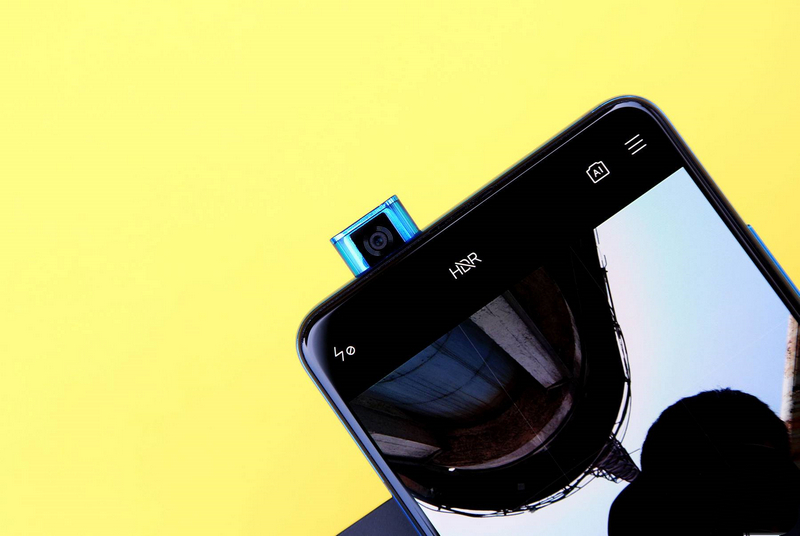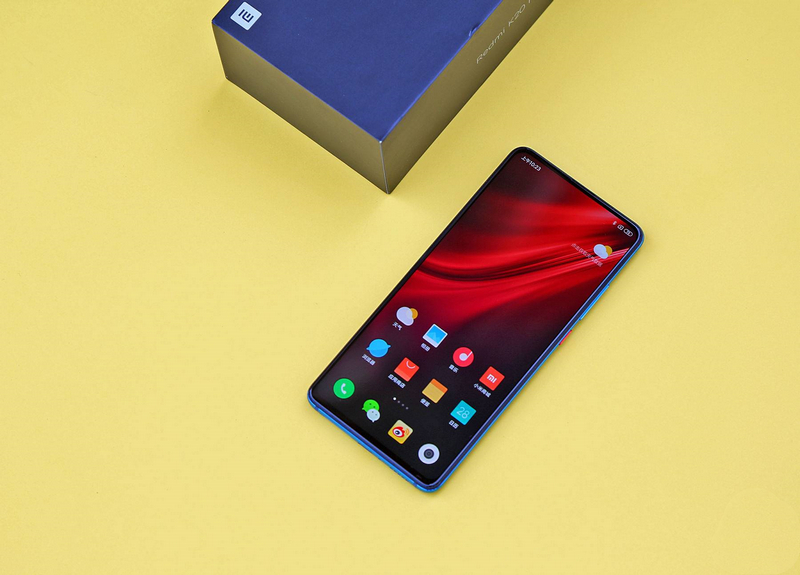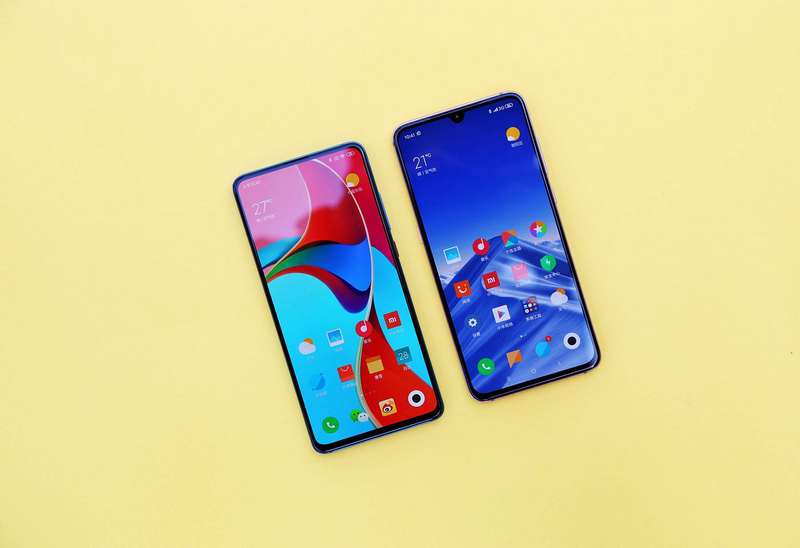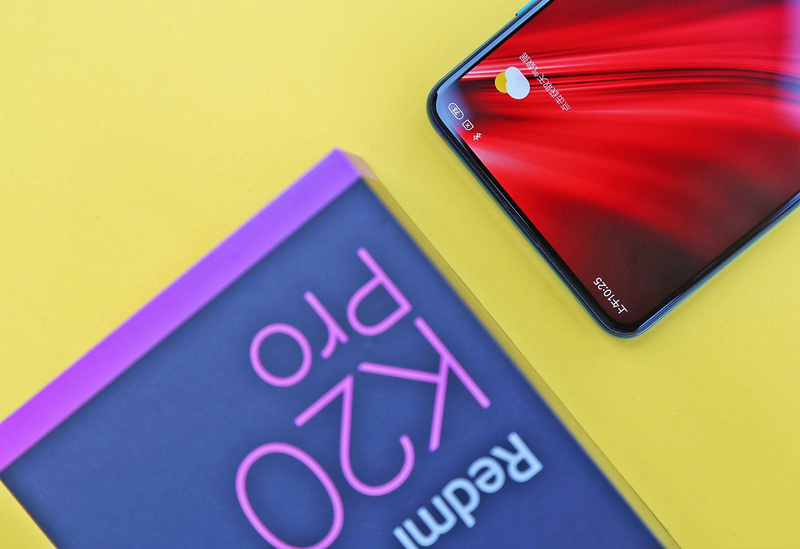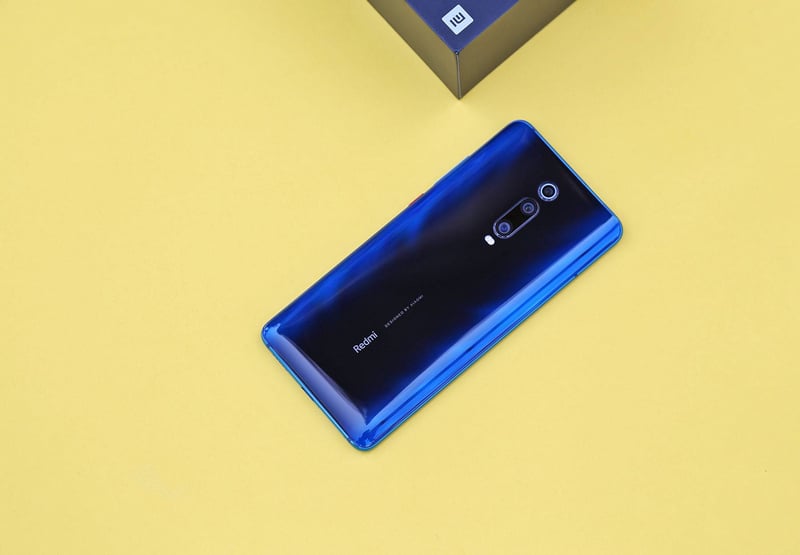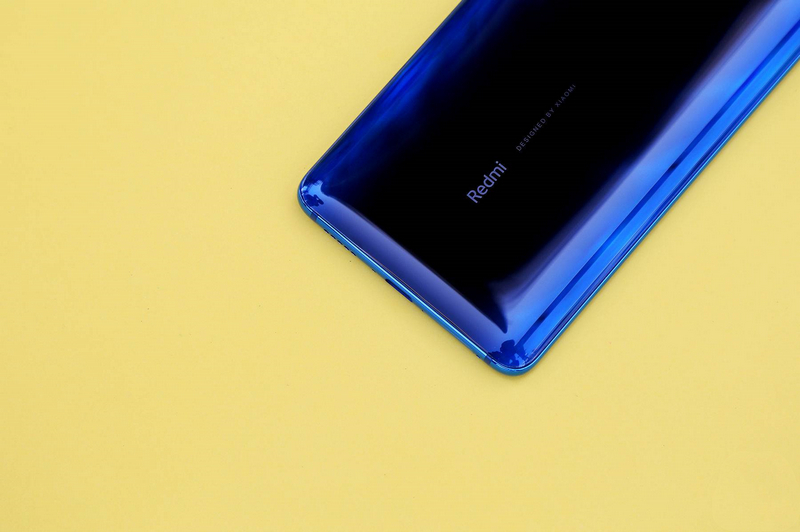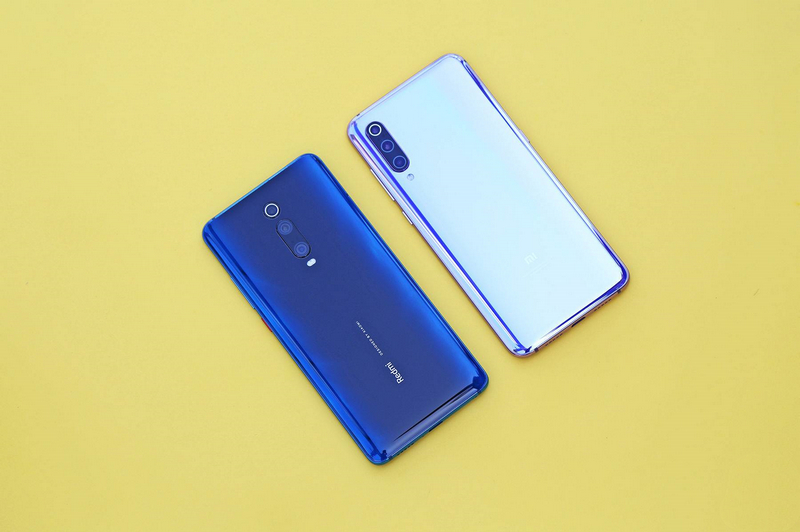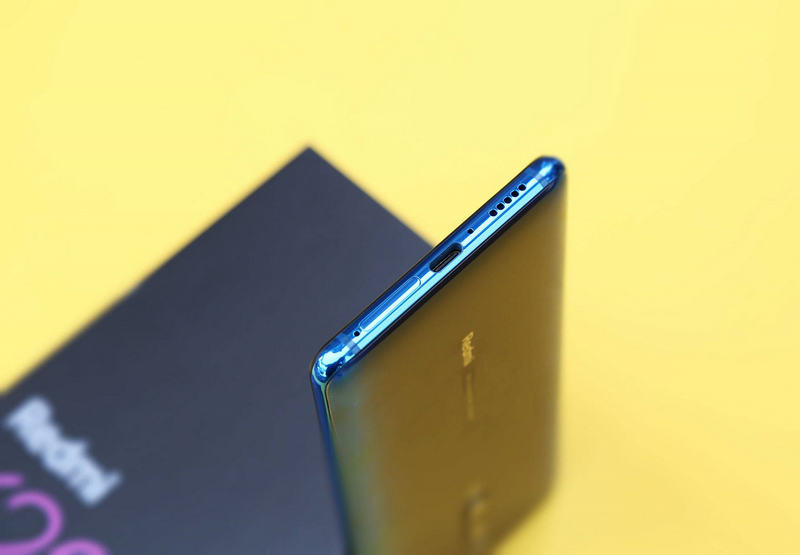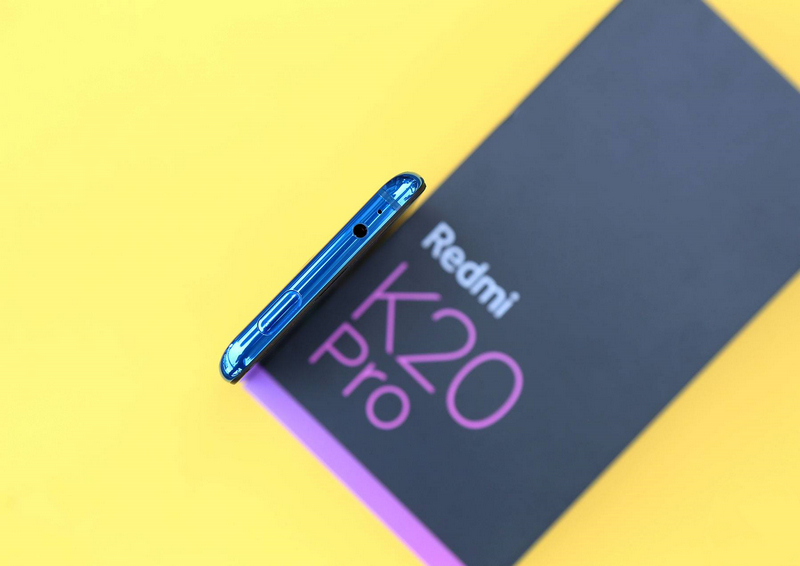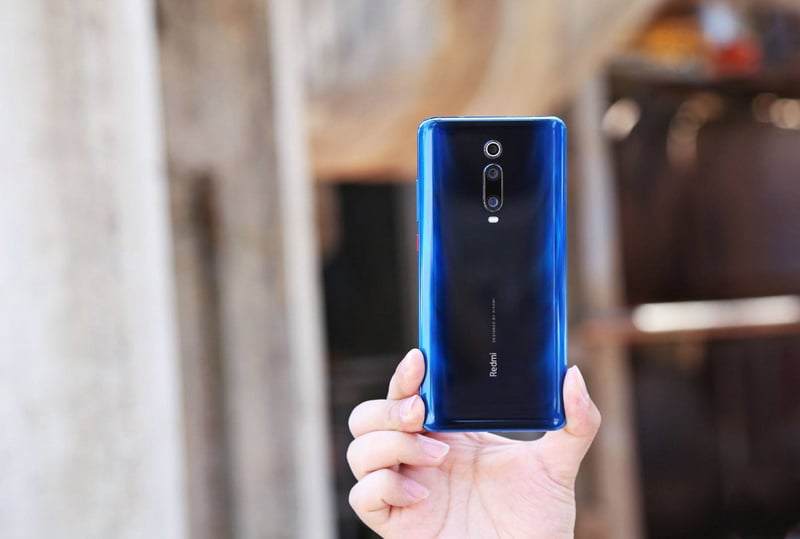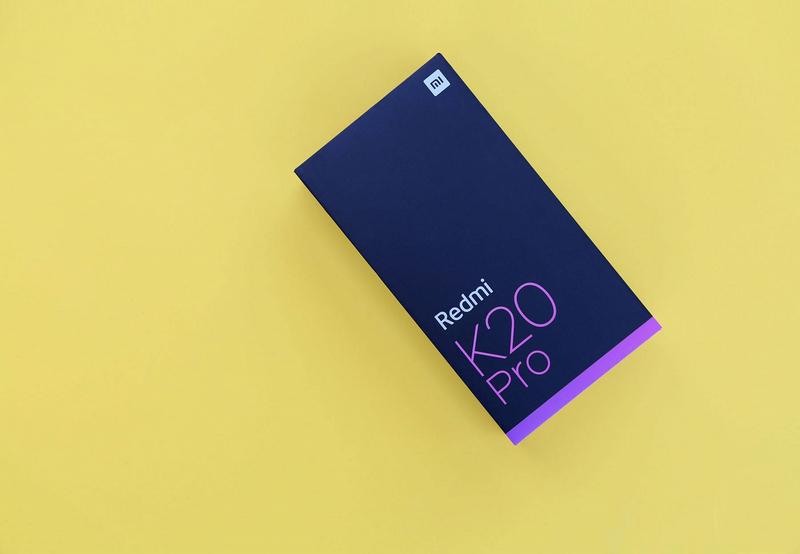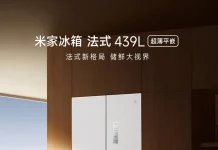At the beginning of the year, Redmi was turned to an independent brand, which still pursues high cost performance and online marketing. In January, Redmi Note 7 was announced which comes with 48MP camera sensor and is priced at 999yuan. Later, Redmi Note 7 Pro and Redmi 7 were launched, which was formally divided into Note series and figure series.
On May 28th, Redmi K20 Pro was launched, which is the first smartphone of Redmi coming with Snapdragon 855.
Redmi K20 Pro comes with pop-up camera set on the top side, which can rise up in 0.8s when take a selfie.
There is a blue light strip on the pop-up camera, which is like vivo X27, and it offers several voice effects for users to choose. On the top of the pop-up mechanism, there is a notification light which will light up when charging and receiving a message. Of course, if you don’t like the strip effect, you can turn it off in setting.
Like the other smartphones with pop-up camera, K20 Pro also comes with excellent protection, including 300,000 lift times, glass cover over the front camera, and double fall protection.
Thanks to the pop-up module, Redmi K20 Pro comes with full screen without notch.
Redmi K20 Pro comes with 6.39-inch AMOLED display with Corning Gorilla Glass, Full HD+ resolution and 19.5:9 tall ratio. The maximum brightness of K20 Pro is 600nit.
K20 Pro also keeps various screen optimization technology, such as sun screen 2.0, which can achieve better outdoor visibility.
The handset also supports DC dimming mode. Redmi claims that the DC dimming mode of K20 Pro should less impact on screen quality.
In addition to the outstanding screen, K20 Pro has pretty much bezel-less.
The top bezel of K20 Pro is 2.1mm, the left and right bezel is 1.85mm, and the bottom bezel is 3.8mm, which are similar to Xiaomi Mi 9 and Xiaomi Mi Mix 3, and the screen-to-body ratio is up to 91.9%
K20 Pro is equipped with in-screen fingerprint sensor, which is faster than Xiaomi Mi 9.
Redmi K20 Pro features 3D curved glass rear cover, and a triple camera unit is placed on the middle of the rear shell.
Redmi K20 Pro offers three color variants, which are Carbon Black, Flame Red and Glacier Blue.
The thickness of the handset is 8.8mm, and the weight is 191g. Because of the battery capacity and pop-up mechanism, the size of Redmi K20 Pro is acceptable.
Powered by Snapdragon 855, Redmi K20 Pro arrives with 6/8 GB of RAM, and internal storage between 64GB and 256GB.
Redmi K20 Pro adopts 8 layers of graphite heat sink instead of Silent-Pipe. Redmi claims that compared with iPhone, which adopts one layer of graphite heat sink, heat dissipation capacity can be increased by 6.5 times with 8 layers of graphite heat sink.
What’s more, Redmi K20 Pro is fueled by 4000mAh battery, which is enough for daily use.
Redmi K20 Pro carries support 27W fast charging, and it can charge 60% in 30 minutes. But the K20 Pro packs 18W charger, if you want to charge faster, you need to buy 27W charger. By the way, Redmi K20 Pro doesn’t support wireless charging.
Redmi K20 Pro comes with NFC features, and keeps 3.5mm earphone jack.
The speaker is set on the handset’s bottom, which has good sound quality.
Redmi K20 Pro packs 48MP main camera with IMX586 sensor, coupled with 13MP secondary camera with an ultra-wide-angle lens, and the 8MP telephoto unit.
There will be more and more smartphones coming with triple camera module with three focal lengths.
K20 Pro camera samples below
[envira-gallery id=”257092″]Through months of optimization, the camera performs better than Xiaomi Mi 9. The image quality of K20 Pro is not the best, but overall, at this price, Redmi K20 Pro is one of the best choices.
There’s a gap between Redmi K20 Pro and other flagship smartphones priced over $500, but Redmi K20 Pro also performs well in some important points, such as screen, fingerprint, performance and battery. If you want to get a flagship smartphone at an affordable price, Redmi K20 Pro should be your first pick.

